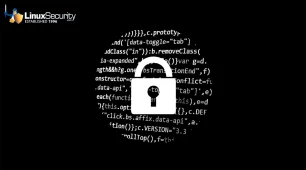-----BEGIN PGP SIGNED MESSAGE-----
Hash: SHA1
______________________________________________________________________________
SUSE Security Announcement
Package: ImageMagick
Announcement ID: SUSE-SA:2006:050
Date: Fri, 08 Sep 2006 17:00:00 +0000
Affected Products: Novell Linux Desktop 9
SLE SDK 10
SLES SDK 9
SUSE LINUX 10.1
SUSE LINUX 10.0
SUSE LINUX 9.3
SUSE LINUX 9.2
SuSE Linux Desktop 1.0
SuSE Linux Openexchange Server 4
SuSE Linux School Server
SuSE Linux Standard Server 8
SUSE SLED 10
Vulnerability Type: code execution
Severity (1-10): 5
SUSE Default Package: no
Cross-References: CVE-2006-3743, CVE-2006-3744, CVE-2006-4144
Content of This Advisory:
1) Security Vulnerability Resolved:
ImageMagick various security problems
Problem Description
2) Solution or Work-Around
3) Special Instructions and Notes
4) Package Location and Checksums
5) Pending Vulnerabilities, Solutions, and Work-Arounds:
See SUSE Security Summary Report.
6) Authenticity Verification and Additional Information
______________________________________________________________________________
1) Problem Description and Brief Discussion
Several security problems have been fixed in ImageMagick:
- CVE-2006-3744: Several heap buffer overflows were found in the Sun
Bitmap decoder of ImageMagick during an audit by the Google Security
Team. This problem could be exploited by an attacker to execute code.
- CVE-2006-3743: Multiple buffer overflows were found by the Google
Security team in the XCF handling due to incorrect bounds checking.
This problem could be exploited by an attacker to execute code.
- CVE-2006-4144: An integer overflow in the ReadSGIImage function can
be used by attackers to potentially execute code.
- An infinite loop in ImageMagick caused by TransformHSB was fixed.
- An infinite loop in the handling of TIFF images was fixed.
2) Solution or Work-Around
There is no known workaround, please install the update packages.
3) Special Instructions and Notes
None.
4) Package Location and Checksums
The preferred method for installing security updates is to use the YaST
Online Update (YOU) tool. YOU detects which updates are required and
automatically performs the necessary steps to verify and install them.
Alternatively, download the update packages for your distribution manually
and verify their integrity by the methods listed in Section 6 of this
announcement. Then install the packages using the command
rpm -Fhv
to apply the update, replacing with the filename of the
downloaded RPM package.
x86 Platform:
SUSE LINUX 10.1:
5f690184a3fd42e008c692ca32420c14
875adc1e047e4229cf38c43e2e4440f6
77f37b959830786ca39d490082f42352
4427316e60ac1d91d11eaf870a165a21
52983ec2c90872eeef642bd3185740d1
SUSE LINUX 10.0:
eb244ad6713f90513c8f07f69159c38a
eac05c08d9e325b0819aa5cbc52ab6c5
f16bb6b5027e3aac4c6a5c79b5b9d112
375301f05f9e3afc0666468d05e779c9
a9b9ccdec88a4266f6b5cacf236156b4
SUSE LINUX 9.3:
e6894d0d2f42caa3f28bef35d3fb2f16
c2e42c42c3f6fdbb155cc90a23678383
010ed22ea64776dc4f23b1363d6ab3b9
8cf0e927fb535a1c9b3f88bb70f66139
e0cf15734aa3b3f816cad715a3237715
SUSE LINUX 9.2:
485f3cce181b3bbb0383a3741b65a324
ea5925b9721d9d268e15811aaed0de02
d5e642cb1007af1557750e4882925777
0a5d22155dd3c62be4d544ffc588ee9f
c8f06aede187803cc28b3837ba3df4ac
Power PC Platform:
SUSE LINUX 10.1:
c93639232b7ea9f89d4e07e581b02165
6d7350f42d29fe3c8d8b61e9d19f4992
3f53b0f21ff82a7047ebcebb8156dc3c
cbfd84e86d3d84dd0eca1d18dd8d174d
6b7ceacc6943720e26def3bd89178979
SUSE LINUX 10.0:
a019f49d450751d8925904276dc8a96e
1aa1dd6441844e1b7b27b1b148d97531
db7787929580024853e4ce4bb2713463
21ea81e9ede5e9690231ff455cb46257
85769d199769b066282c7a0848e07072
x86-64 Platform:
SUSE LINUX 10.1:
eeb689ea09f8dd351c2915e79f1d1d05
475f0e4c441dbe534252850a393d799a
edb98a197924dcffaf6cf0b1e40bad15
265a8d36b62f176bce69bdad7d42b29c
6c05eff3c6754c28c7246952f5c0ccef
SUSE LINUX 10.0:
13adfc596917d5cc6040c70484721948
1e4f5f29ea4b6c14e10721297cf1becf
4cfae138dd196c3dc080e0a9b9c5efa6
a62a8257ef807d1a3076e217b2f28990
b82ffae380e38281e3fa30afbf576a2a
SUSE LINUX 9.3:
78335adff546de7155987c67740c13b0
b5a9ae25cc1cb462c954fc77e72becea
6a990464052f8e78bd611933137d6d1b
0ce607b746d47c40694482abc512ec22
9b3e3c70d946faf371525b6828caf5cf
SUSE LINUX 9.2:
6e4ba2acea15e85d78ff5e7fd7355237
9916027d97d2ff12e69a637a8bb094c3
e63c687fa28dceee4afd9ab3a5269321
1ccfc6d1025165e30217692d77b22ae5
993e9359229ea21ec4afc16b8ea5aea0
Sources:
SUSE LINUX 10.1:
7ea636d2edac4309d4e0991b113989df
SUSE LINUX 10.0:
ae5db5025dc418c82516ee2279319ad2
SUSE LINUX 9.3:
c646be7a64905d052b06951e93c770bf
SUSE LINUX 9.2:
00bf26f2713322a86e63498e49cf48fc
Our maintenance customers are notified individually. The packages are
offered for installation from the maintenance web:
SuSE Linux Openexchange Server 4
SLES SDK 9
Novell Linux Desktop 9
SuSE Linux Standard Server 8
SuSE Linux School Server
SuSE Linux Desktop 1.0
SLE SDK 10
SUSE SLED 10
http://support.novell.com/techcenter/psdb/9572451219715989842a945aed31ae16.html
______________________________________________________________________________
5) Pending Vulnerabilities, Solutions, and Work-Arounds:
See SUSE Security Summary Report.
______________________________________________________________________________
6) Authenticity Verification and Additional Information
- Announcement authenticity verification:
SUSE security announcements are published via mailing lists and on Web
sites. The authenticity and integrity of a SUSE security announcement is
guaranteed by a cryptographic signature in each announcement. All SUSE
security announcements are published with a valid signature.
To verify the signature of the announcement, save it as text into a file
and run the command
gpg --verify
replacing with the name of the file where you saved the
announcement. The output for a valid signature looks like:
gpg: Signature made using RSA key ID 3D25D3D9
gpg: Good signature from "SuSE Security Team "
where is replaced by the date the document was signed.
If the security team's key is not contained in your key ring, you can
import it from the first installation CD. To import the key, use the
command
gpg --import gpg-pubkey-3d25d3d9-36e12d04.asc
- Package authenticity verification:
SUSE update packages are available on many mirror FTP servers all over the
world. While this service is considered valuable and important to the free
and open source software community, the authenticity and the integrity of
a package needs to be verified to ensure that it has not been tampered
with.
There are two verification methods that can be used independently from
each other to prove the authenticity of a downloaded file or RPM package:
1) Using the internal gpg signatures of the rpm package
2) MD5 checksums as provided in this announcement
1) The internal rpm package signatures provide an easy way to verify the
authenticity of an RPM package. Use the command
rpm -v --checksig
to verify the signature of the package, replacing with the
filename of the RPM package downloaded. The package is unmodified if it
contains a valid signature from build@suse.de with the key ID 9C800ACA.
This key is automatically imported into the RPM database (on
RPMv4-based distributions) and the gpg key ring of 'root' during
installation. You can also find it on the first installation CD and at
the end of this announcement.
2) If you need an alternative means of verification, use the md5sum
command to verify the authenticity of the packages. Execute the command
md5sum
after you downloaded the file from a SUSE FTP server or its mirrors.
Then compare the resulting md5sum with the one that is listed in the
SUSE security announcement. Because the announcement containing the
checksums is cryptographically signed (by security@suse.de), the
checksums show proof of the authenticity of the package if the
signature of the announcement is valid. Note that the md5 sums
published in the SUSE Security Announcements are valid for the
respective packages only. Newer versions of these packages cannot be
verified.
- SUSE runs two security mailing lists to which any interested party may
subscribe:
suse-security@suse.com
- General Linux and SUSE security discussion.
All SUSE security announcements are sent to this list.
To subscribe, send an e-mail to
.
suse-security-announce@suse.com
- SUSE's announce-only mailing list.
Only SUSE's security announcements are sent to this list.
To subscribe, send an e-mail to
.
For general information or the frequently asked questions (FAQ),
send mail to or
.
==================================================================== SUSE's security contact is or .
The public key is listed below.
====================================================================



















